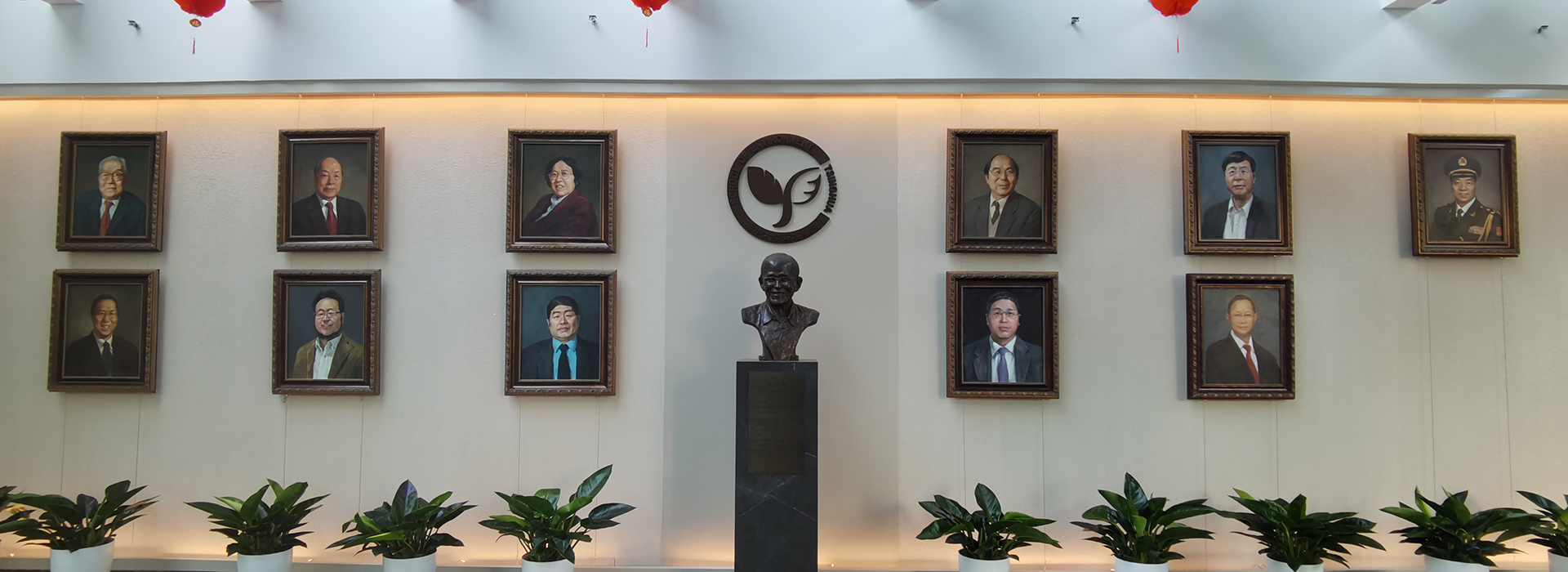Journal Papers
1. Yu J, Lin M,Tan Q*, et al. High-Value Utilization of Graphite Electrodes in Spent Lithium-Ion Batteries: From 3D Waste Graphite to 2D Graphene Oxide. Journal of Hazardous Materials, 2021,401:123715.
2. Tan Q, Liu L, Yu M, et al. An Innovative Method of Recycling Metals in Printed Circuit Board (PCB) Using Solutions From PCB Production. Journal of Hazardous Materials, 2020,390:121892.
3. Chen Y, Li J,Tan Q*. Trends of Production, Consumption and Environmental Emissions of Decabromodiphenyl Ether in Mainland China. Environmental Pollution, 2020,260:114022.
4. Yu J,Tan Q*, Li J. Exploring a Green Route for Recycling Spent Lithium-Ion Batteries: Revealing and Solving Deep Screening Problem. Journal of Cleaner Production, 2020,225:120269.
5. Tan Q, Li J, Boljkovac C. Responding to China's Waste Import Ban through a New, Innovative, Cooperative Mechanism[J]. Environmental Science & Technology, 2018, 52(14):7595-7597.
6. Xu Y, Li J,Tan Q*, et al. Global status of recycling waste solar panels: A review[J]. Waste Management, 2018, 75:450-458.
7. Tan Q, Duan H, Liu L, et al. Rethinking residential consumers' behavior in discarding obsolete mobile phones in China[J]. Journal of Cleaner Production, 2018, 195:1228-1236.
8. Tan Q, Deng C, Li J. Enhanced recovery of rare earth elements from waste phosphors by mechanical activation[J]. Journal of Cleaner Production, 2017, 142:2187-2191.
9. Tan Q, Dong Q, Liu L, et al. Potential recycling availability and capacity assessment on typical metals in waste mobile phones: A current research study in China[J]. Journal of Cleaner Production, 2017, 148:509-517.
10. Tan Q, Deng C, Li J. Effects of mechanical activation on the kinetics of terbium leaching from waste phosphors using hydrochloric acid[J]. Journal of Rare Earths, 2017, 35(4):398-405.
11. Tan Q, Li J. Sustainable development: Manage chemicals and waste globally[J]. Nature, 2017, 547(7662):162.
12. Tan Q, Li J. Potential mercury emissions from fluorescent lamps production and obsolescence in mainland China[J]. Waste Management & Research, 2016, 34(1):67-74.
13. Tan Q, Deng C, Li J. Innovative Application of Mechanical Activation for Rare Earth Elements Recovering: Process Optimization and Mechanism Exploration[J]. Scientific Reports, 2016, 6:19961.
14. Tan Q, Li J, Zeng X. Rare Earth Elements Recovery from Waste Fluorescent Lamps: A Review[J]. Critical Reviews in Environmental Science and Technology, 2015, 45(7):749-776.
15. Tan Q, Li J. Recycling Metals from Wastes: A Novel Application of Mechanochemistry[J]. Environmental Science & Technology, 2015, 49(10):5849-5861.
16. Tan Q, Song Q, Li J. The environmental performance of fluorescent lamps in China, assessed with the LCA method[J]. The International Journal of Life Cycle Assessment, 2015, 20(6):807-818.
17. Tan Q, Zeng X, Ijomah W L, et al. Status of End-of-life Electronic Product Remanufacturing in China[J]. Journal of Industrial Ecology, 2014, 18(4):577-587.
18. Tan Q, Li J. A study of waste fluorescent lamp generation in mainland China[J]. Journal of Cleaner Production, 2014, 81(0):227-233.
19. Wang M,Tan Q, Liu L, et al. Selective Regeneration of Lithium From Spent Lithium-Ion Batteries Using Ionic Substitution Stimulated by Mechanochemistry. Journal of Cleaner Production, 2021,279:123612.
20. Chen Y, Li S,Tan Q, et al. Study On Weee Collection and Recycling Scheme in Typical Asia-Pacific Countries. Environmental Engineering and Management Journal, 2019,18(7):1487-1498.
21. Wang M,Tan Q, Liu L, et al. A Low-Toxicity and High-Efficiency Deep Eutectic Solvent for the Separation of Aluminum Foil and Cathode Materials From Spent Lithium-Ion Batteries. Journal of Hazardous Materials, 2019,380:120846.
22. Liu K,Tan Q, Liu L, et al. Acid-Free and Selective Extraction of Lithium From Spent Lithium Iron Phosphate Batteries Via a Mechanochemically Induced Isomorphic Substitution. Environmental Science & Technology, 2019,53(16):9781-9788.
23. Wang M,Tan Q, Liu L, et al. A Facile, Environmentally Friendly, and Low-Temperature Approach for Decomposition of Polyvinylidene Fluoride from the Cathode Electrode of Spent Lithium-Ion Batteries. ACS Sustainable Chemistry & Engineering, 2019,7(15):12799-12806.
24. Wang M,Tan Q, Liu L, et al. Efficient Separation of Aluminum Foil and Cathode Materials from Spent Lithium-Ion Batteries Using a Low-Temperature Molten Salt. ACS Sustainable Chemistry & Engineering, 2019,7(9):8287-8294.
25. Wang M,Tan Q, Li J. Unveiling the Role and Mechanism of Mechanochemical Activation on Lithium Cobalt Oxide Powders from Spent Lithium-Ion Batteries[J]. Environmental Science & Technology, 2018, 52(22):13136-13143.
26. Zlamparet G I,Tan Q, Stevels A B, et al. Resource conservation approached with an appropriate collection and upgrade-remanufacturing for used electronic products[J]. Waste Management, 2018, 73:78-86.
27. He K,Tan Q, Zheng L, et al. Adapting to new policy environment – past pattern and future trend in us-sino waste plastic trade flow[J]. International Journal of Sustainable Development & World Ecology, 2018, 25(8):703-712.
28. Yang C,Tan Q, Zeng X, et al. Measuring the sustainability of tin in China[J]. Science of the Total Environment, 2018, 635:1351-1359.
29. Wang M,Tan Q, Chiang J F, et al. Recovery of rare and precious metals from urban mines—A review[J]. Frontiers of Environmental Science & Engineering, 2017, 11(5):1.
30. Yang C, Li J,Tan Q, et al. Green Process of Metal Recycling: Coprocessing Waste Printed Circuit Boards and Spent Tin Stripping Solution[J]. Acs Sustainable Chemistry & Engineering, 2017, 5(4):3524-3534.
31. Yang C,Tan Q, Liu L, et al. Recycling Tin from Electronic Waste: A Problem That Needs More Attention[J]. Acs Sustainable Chemistry & Engineering, 2017, 5(11):9586-9598.
32. Duan H, Hu J,Tan Q, et al. Systematic characterization of generation and management of e-waste in China[J]. Environmental Science and Pollution Research, 2016, 23(2):1929-1943.
33. Tan Q,Zheng L,Zhao N,et al. International Situation Analysis about China's New Policy of Prohibition of Solid Waste Imports [J].ENVIRONMENT AND SUSTAINABLE DEVELOPMENT, 2018(01):39-42. (InChinese)
34. Tan Q,Liang Y,Dong Q, et al. Study on the environmental impact of waste office equipment critical component treatment [J]. China Environmental Science, 2017, 37(7):2646-2655.
35. Yu H,Liang D,Tan Q,et al. Issue of Marine Plastic Litter and Micro Plastic and their international progress [J].World Environment, 2018(02):50-53.
36. Xu X,Tan Q,Liu L, et al. Assessment of Medical Waste Disposal Technologies Based on the AHP [J].ENVIRONMENTAL SCIENCE, 2018(12):1-11.
37. Liu F,Zheng L,Tan Q, et al. International management system on transboundary movement of waste and used electrical and electronic equipment: A comparative study [J]. China Environmental Science, 2018, 38(06):2193-2201.
38. Li Y, Li J,Tan Q,et al. Development course and driving force of municipal solid waste disposal industry in China [J]. China Environmental Science, 2018, 38(11):4173-4179.
39. Liu F,Zheng L,Tan Q, et al. EU Management Experience on Waste FluorescentLampsRecycling and Inspirations for China[J].ENVIRONMENTAL SCIENCE AND MANAGEMENT, 2018, 43(06):6-10.
40. Li J, Duan L, Zheng L, et al. Implications of International Experience of Solid Waste Management to China [J].Environmental Protection, 2017(16):69-72.
Books
1. Li Jinhui,Tan Quanyin,Zeng Xianlai,Wang Mengmeng, Theory and Technology for the Prevention and Control of Pollution from Hazardous Waste, 2018, Beijing, Science Press
2. Li Jinhui,Tan Quanyin,Environmental Risk Assessment Methods and Practices, 2018, Beijing, China Environment Publishing Group
3. Li Jinhui, Jia Shaohua,Tan Quanyin,Environmental Diplomacy Basis and Practice2018, Beijing, China Environment Publishing Group
4. Li Jinhui, Liu Lili, et al. Environmental Risk Assessment and Management for Life and Consumption Waste during the Treatment and Disposal Process,2014, Beijing,China Environmental Science Press





